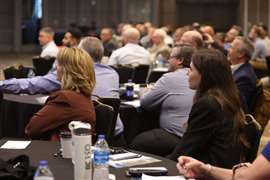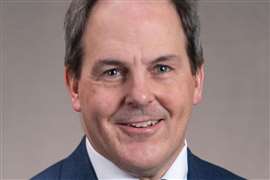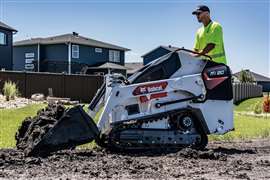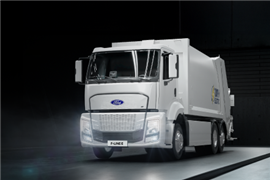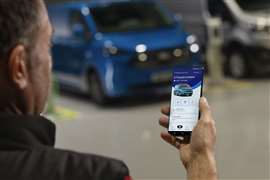Read this article in 中文 Français Deutsch Italiano Português Español
The role of hybrid power systems in decarbonization
09 June 2024
Hatz’s Ben Froland offers a preview of his presentation about hybrid power systems and decarbonization for the Power Progress Summit
When it comes to the role of electric power generation in the modern world, Ben Froland admits he’s a bit of an idealist. The product manager for power generation at Hatz Americas said he likes to think that industry is working together for the betterment of the world.
“I want to provide power solutions to people because power generation — largely with diesel and gasoline — have brought countries up out of nothing into relative stability,” Froland said.
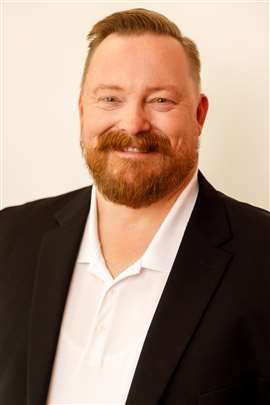 Ben Froland (Photo: Hatz Americas)
Ben Froland (Photo: Hatz Americas)
Froland is slated to present at the Power Progress Summit in October on the role hybrid electric systems — those that combine internal combustion (IC) and battery electric power — play in decarbonization. He spoke with Power Progress about his plans for his talk.
What Decarbonization Means
Froland said he expected his presentation to include a discussion of what decarbonization actually means, as he said he believes it has been relegated to “buzzword” status.
“I don’t think most people even think to ask what that is and what is the equation and how much impact are we really having by doing anything.”
Froland noted that when it comes to carbon dioxide (CO2) — the greenhouse gas (GHG) at the heart of decarbonization — there are many variables, both natural and otherwise, that affect its production and consumption.
“Even environmentalists would concede that there are, like, 55 variables total,” Froland said, adding that the Earth’s atmosphere, oceans and land masses all play a part. He said it’s important for those discussing decarbonization to appreciate this variability to avoid discarding existing technologies, such as diesel engines, out of hand.
“The last round of emissions, for example, for diesel engines — we dropped the NOx (nitrogen oxides) by 90 percent and the particulate matter by 90 percent,” Froland said. “That’s really good, and we want to consider that to be a ‘dirty’ source of power.”
According to Froland, one reason diesel will continue to have a role in power generation is because of its energy density.
“Diesel is still the most energy-dense medium on the planet,” he said. “There is nothing pound-for-pound that has more energy in it than a gallon of diesel.”
Froland added that when “you look at the size of a battery and the weight of even a good lithium battery, they are still very heavy compared to that gallon of diesel with the amount of energy that’s stored inside of it.”
Making Diesel Cleaner
The key for power generation, according to Froland, is bringing these two power sources together such that the diesel engine runs only as necessary — making already clean diesel power even cleaner by not running it continuously.
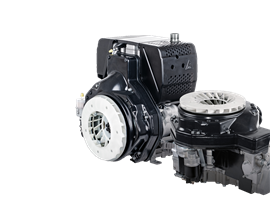 The Hatz fiPMG system can provide diesel and battery performance in one machine. (Photo: Hatz)
The Hatz fiPMG system can provide diesel and battery performance in one machine. (Photo: Hatz)
“So, where those clean diesels apply to hybridization, then, is now you can look at machines and say, OK, historically I would just run a larger engine all the time, usually inefficiently — I’m just spinning for no reason other than I’m waiting for a command to perform some work. Where the hybrids really shine is you can take all that energy from the diesel and put it into the newer batteries.”
Froland used transfer pumps as an example.
“I don’t need the diesel generator running all the time, waiting for it to click on and pump for a little bit and turn off,” he said. “You can just draw off the battery — and draw off the battery many times — until the battery gets low enough. And then it says, OK, I need to be recharged, and that little diesel engine fires up and it charges it back up again.”
According to Froland, this is an especially fuel-efficient approach, as well.
“We don’t have very big tanks on our little permanent magnet generators that we use for battery charging, but you can run them over and over,” he said. “I think 0.08 gallons per hour is what it takes to run, and I can charge a 50 to 100 kWh battery in an hour and just use it over and over again with that little bit of fuel.”
Maintenance is another benefit of this hybrid approach.
“You hardly ever have to service the engine at all because the hybrid application, rather than running all the time, you don’t need the manpower to go out there and service,” he said, adding that intermittent engine use means that it takes a long time to hit a service interval, such as the 250-hour oil change interval on Hatz’ small diesels.
“So very little emissions come out of that small engine, and it’s only performing work when it’s necessary,” Froland said. “So that’s where you’re really getting your benefit.”
POWER SOURCING GUIDE
The trusted reference and buyer’s guide for 83 years
The original “desktop search engine,” guiding nearly 10,000 users in more than 90 countries it is the primary reference for specifications and details on all the components that go into engine systems.
Visit Now
STAY CONNECTED




Receive the information you need when you need it through our world-leading magazines, newsletters and daily briefings.
CONNECT WITH THE TEAM










